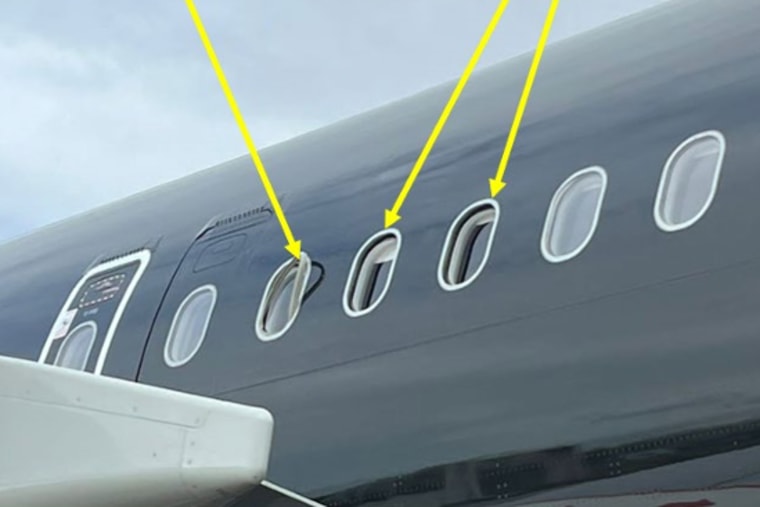An aircraft bound for the U.S. took flight with missing and damaged windowpanes and had to abruptly return to London out of safety concerns, the U.K.'s Air Accidents Investigation Branch said in a special bulletin last week.
According to the bulletin, which was issued Friday, "several cabin windows" on an Airbus A321 were damaged by "high power lights used during a filming event," but the damage wasn’t discovered until the aircraft's next flight was already in the air.
The bulletin noted that "more serious consequences" could have arisen if the "window integrity was lost at higher differential pressure."
The flight took off from London Stansted Airport and was set to land at the Orlando, Florida, International Airport on Oct. 4. It was carrying 11 crew members and nine passengers, the bulletin said.
After takeoff, passengers reported that the cabin seemed colder and noisier than it normally would have, according to the bulletin, but it wasn't until an air crew member walked toward the back of the cabin and agreed that it was "loud enough to damage your hearing" that the crew realized something was wrong.
The special bulletin said that the crew member's "attention was drawn to a cabin window on the left side" of the plane and that he "observed that the window seal was flapping in the airflow and the windowpane appeared to have slipped down."
The crew member informed others of the missing window, which was discovered when the plane had already climbed to about 14,500 feet. The bulletin said pilots reduced flight speed and stopped climbing as the engineer and the third pilot went to check it out. Based on their observation, the crew decided to return to Stansted.
The plane landed safely back at its origin airport, and the plane remained "pressurized normally" throughout the 36-minute flight.
Once the plane was parked, the crew inspected it and found that two windowpanes were missing. A third windowpane was "dislodged," the special bulletin said, and a fourth "protruded from the left side" of the plane.
Investigators determined that the panes faced “thermal damage” after having been exposed to intense lighting for four to five hours the day before.
Maxibrute 12 lights were used to simulate a sunrise from inside an aircraft for an unspecified filming event the day before, the bulletin said. The lights are supposed to be shined at a distance of 10 meters, but they were placed anywhere from 6 to 9 meters while they illuminated the plane.
Investigations continue.
